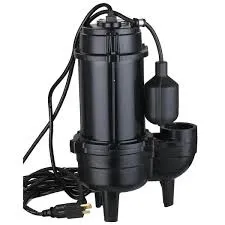Lithuanian
- Afrikaans
- Albanian
- Amharic
- Arabic
- Armenian
- Azerbaijani
- Basque
- Belarusian
- Bengali
- Bosnian
- Bulgarian
- Catalan
- Cebuano
- Corsican
- Croatian
- Czech
- Danish
- Dutch
- English
- Esperanto
- Estonian
- Finnish
- French
- Frisian
- Galician
- Georgian
- German
- Greek
- Gujarati
- Haitian Creole
- hausa
- hawaiian
- Hebrew
- Hindi
- Miao
- Hungarian
- Icelandic
- igbo
- Indonesian
- irish
- Italian
- Japanese
- Javanese
- Kannada
- kazakh
- Khmer
- Rwandese
- Korean
- Kurdish
- Kyrgyz
- Lao
- Latin
- Latvian
- Lithuanian
- Luxembourgish
- Macedonian
- Malgashi
- Malay
- Malayalam
- Maltese
- Maori
- Marathi
- Mongolian
- Myanmar
- Nepali
- Norwegian
- Norwegian
- Occitan
- Pashto
- Persian
- Polish
- Portuguese
- Punjabi
- Romanian
- Russian
- Samoan
- Scottish Gaelic
- Serbian
- Sesotho
- Shona
- Sindhi
- Sinhala
- Slovak
- Slovenian
- Somali
- Spanish
- Sundanese
- Swahili
- Swedish
- Tagalog
- Tajik
- Tamil
- Tatar
- Telugu
- Thai
- Turkish
- Turkmen
- Ukrainian
- Urdu
- Uighur
- Uzbek
- Vietnamese
- Welsh
- Bantu
- Yiddish
- Yoruba
- Zulu
Telephone: +86 13120555503
Email: frank@cypump.com
Lap . 18, 2024 05:26 Back to list
septic sewage pumps
Understanding Septic Sewage Pumps An Essential Component of Waste Management
Septic sewage pumps play a crucial role in managing waste systems, particularly in rural areas where traditional sewer systems are not available. These pumps are designed to move wastewater from a septic tank to the drain field or to a treatment facility, ensuring that sewage is disposed of safely and efficiently. Understanding the function, types, and maintenance of septic sewage pumps can help homeowners make informed decisions about their waste management systems.
What Are Septic Sewage Pumps?
A septic sewage pump is a submersible pump that is specifically designed to handle the effluent from a septic tank. Unlike standard pumps, septic pumps are built to handle solids, liquids, and slurries without becoming clogged. When wastewater flows into the septic tank, solids settle at the bottom, while liquids rise to the top. The septic sewage pump is responsible for drawing the effluent from the tank once it reaches a certain level, pushing it into the drain field or coming out for additional processing.
Types of Septic Sewage Pumps
There are several types of septic sewage pumps, each designed for specific applications. The two most common types are
1. Effluent Pumps These are used to pump effluent from the septic tank to the drain field. Effluent pumps can handle solids up to a certain size, usually around ½ inch. They are often used in gravity-fed systems and can help in situations where elevation changes are necessary.
2. Sump Pumps Although sump pumps are typically used for water removal in basements, they can also be utilized in septic systems. They are particularly effective for pumping sludge and other heavy materials out of tanks.
3. Grinder Pumps These pumps are essential for homes that are situated at lower elevations than the septic tank or the municipal sewer system. Grinder pumps contain a grinding mechanism that shreds solid waste into smaller pieces, enabling it to be pumped more easily through smaller pipes and over significant distances.
septic sewage pumps

Importance of Maintenance
Maintaining a septic sewage pump is essential for its longevity and efficiency. Regular maintenance can prevent costly repairs and ensure the system operates smoothly. Here are some key maintenance tips
- Check the Power Supply Regularly inspect the electrical connections and circuitry to ensure the pump is receiving power. A tripped breaker or faulty connection can lead to pump failure.
- Inspect for Clogs Periodically check the pump for debris and clogs, particularly in the filters and impellers. Cleaning these components can help maintain optimal performance.
- Monitor the System Keep an eye on the water levels in the septic tank. Address any unusual fluctuations or signs of backups promptly to prevent further damage.
- Schedule Professional Inspections It’s wise to have a licensed septic technician inspect your system routinely, typically every three to five years, to ensure everything is functioning properly.
- Be Mindful of Usage Avoid flushing non-biodegradable items down the toilet and limit the use of harsh chemicals that can disrupt the natural bacteria in the septic system.
Conclusion
Septic sewage pumps are an integral part of efficient waste management in areas without access to municipal sewer systems. By understanding their functions, types, and maintenance needs, homeowners can ensure the longevity and effectiveness of their septic systems. Proper care of these pumps not only contributes to the health of the environment but also fosters a safe and sanitary living space. Investing time in maintenance and monitoring will undoubtedly pay off in the form of fewer repairs and enhanced peace of mind.
-
ISG Series Vertical Pipeline Pump - Chi Yuan Pumps Co., LTD.|Energy Efficiency, Corrosion Resistance
NewsAug.03,2025
-
ISG Series Pipeline Pump - Chi Yuan Pumps | Energy Efficiency&Compact Design
NewsAug.03,2025
-
ISG Series Vertical Pipeline Pump - Chi Yuan Pumps Co., LTD.|High Efficiency, Low Noise, Durable
NewsAug.02,2025
-
ISG Series Vertical Pipeline Pump - Chi Yuan Pumps | High Efficiency, Low Noise
NewsAug.02,2025
-
ISG Series Vertical Pipeline Pump- Chi Yuan Pumps Co., LTD.|High Efficiency&Compact Design
NewsAug.02,2025
-
Heavy-Duty Mining Sludge Pumps - Wear-Resistant Slurry Handling
NewsAug.02,2025










